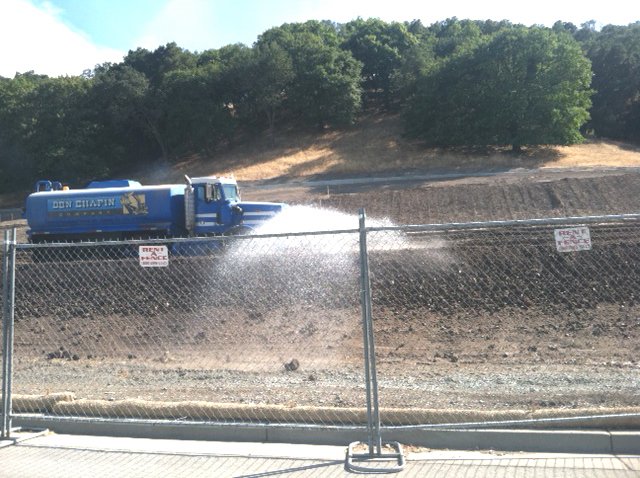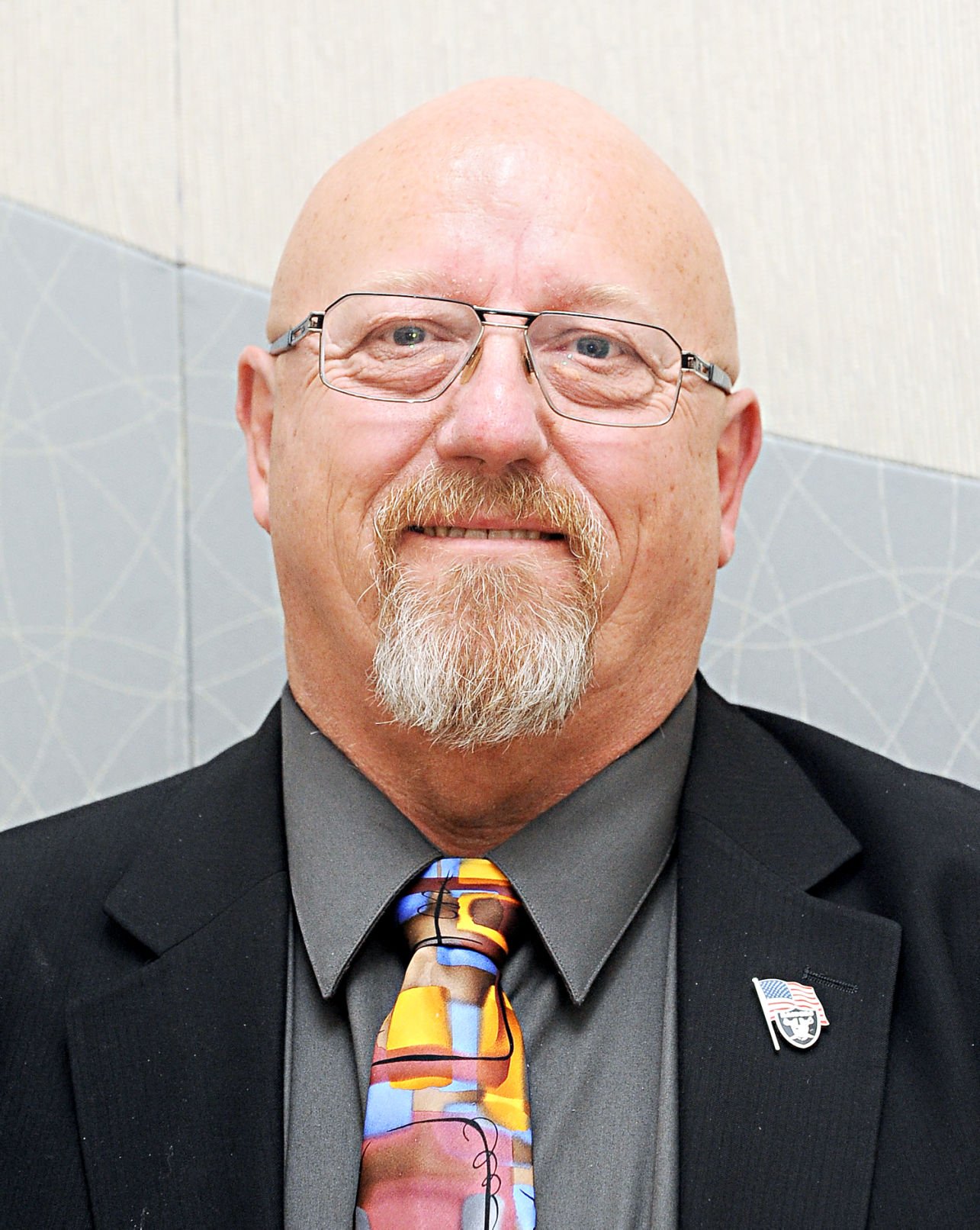Thirty-four-year-old West Gilroy resident Anna Miyabara, pregnant with twins, moved to Gilroy from the Bay Area a few months ago, hoping to raise her babies away from the air pollution of the big city.
But since early summer, when the Glen-Loma Corporation began initial construction on a housing development across the street, Miyabara has been afraid to breathe the air just outside her doorstep on Rancho Hills Drive.
“The dust is so bad,” Miyabara said on Wednesday pointing to the construction site. “I’m delivering my babies tomorrow, and I won’t be able to open the windows with them home.”
On a few occasions when Miyabara has opened her windows for just a few hours, she said she wipes a thick layer of silt off the windowsill.
“And to think, this is what my babies will be breathing,” she said.
Rancho Hills Drive, once a street where neighbors mingled outdoors in the evenings, watching their children play their front yards, has become an isolating street where people board themselves up inside, Miyabara said.
“When we first moved here, this street was like a community,” she said. “But you don’t see people hanging out outside anymore like they used to.”
Miyabara is just one of the many neighbors near the Rancho Hills development who are upset about the dusty air caused by the large amounts of earth being pushed around for the construction project – and they didn’t hesitate to give the City an earful for letting it continue.
About 25 west Gilroy residents showed up to City Council’s regular meeting on Monday to present their complaints.
“The dust is out of control,” said westside resident John Litzinger, who brought photos of the dusty neighborhood as well as a plastic bag full of dust he collected to pass around to Council members.
“The contractor is saving time and profit and passing the cost on to the homeowners in the neighborhood,” Litzinger said.
Seven other riled westside residents railed against Council for not mitigating the problem.
Resident Joe Young, who painted himself as a no-nonsense military veteran that would never complain about a trivial issue, grew emotional when he spoke to Council.
“We’ve suffered for two months and not one of you showed up at our door and said show me the dust,” Young said. “Why not? No answer, huh?”
Young said he’s lost his summer because he can’t spend evenings on his own patio.
“I’m too emotional, I can’t finish,” he said, as he left the podium mid-thought.
The neighbors complained that the contractor hired by Glen-Loma Corporation, Don Chapin Construction, is moving too fast with his graders and not sufficiently watering the project to keep dust levels down.
City staff disagreed.
Kristi Abrams, community development director, said because the developers are acting within industry standards, they cannot force them to modify the project.
“As the city began receiving dust complains we were in constant communication with the contractor regarding the dust control,” Abrams said.
Abrams said the city has worked with the contractor to increase the amount of water trucks on the project to four – which, she said, is more than is required for a project of Rancho Hill’s size – and reduced the overload of dirt for each grader.
“Over the past week we’ve seen sufficient dust control,” she said as people in the Council audience shook their heads and snickered.
Because the issue was brought up during the public comment section, Council could not delve into a full discussion of the issue, but Mayor Al Pinheiro did address the crowd by saying Council will “continue to monitor” the issue.
Don Chapin, president of Don Chapin Construction, said he respects the fact that construction projects can be a nuisance to live near.
“I looked into it, and everything that I have uncovered has indicated that our folks are doing a very good job with dust control,” Chapin said. “But I know it is a bit of an inconvenience and we’re working toward making everyone happy.”
Chapin said that his crew sweeps the street at least once a week, and at the end of the dirt-moving project, he plans to perform a neighborhood cleanup. By the fall, the “major disturbance” phase of the project will have died down and the company will have settled into less dusty projects.
Later in the week from his home, Litzinger acknowledged that the dust levels have been getting better over the past week or so.
“But what really gets me is all the City needed to do was reach out to us before this happened, so there would be some understanding,” Litzinger said. “A little communication would have gone a long way.”















